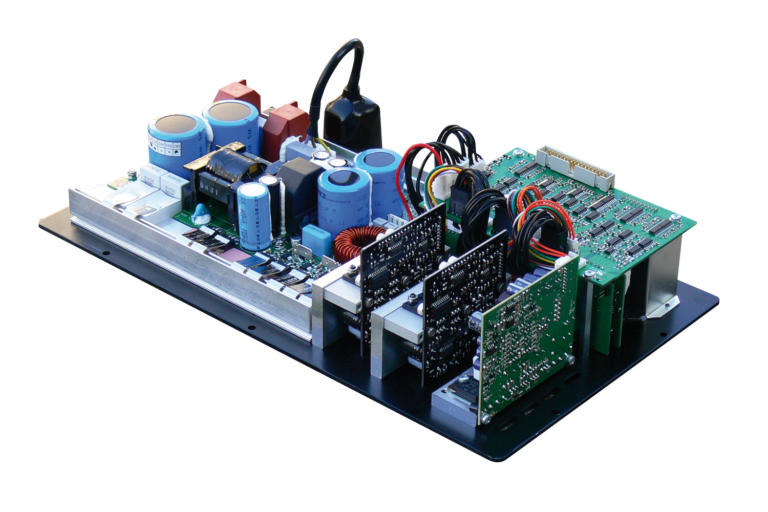PWM – Pulse Width Modulation
In recent years amplifier technology experienced its second big change after going from tubes to transistors some 40 years ago. You can still find semiconductors in this new generation of amplifiers, but the signals to be amplified are treated in a completely new and different way.
Pulse Width Modulation
PWM (Pulse Width Modulation) – sometimes referred to as Class D amplification, sometimes called Switching Amp Technology – converts the incoming signal to a series of rectangular waveforms of equal height. The width of the rectangles varies in time and the relation of the width of the rectangles represents the musical signal. This waveform can be amplified much more simply, as the transistors are not modulated anymore; instead they are used as switches that only turn the power supply voltage on and off.
It is possible that a very fast mechanical switch could do the job, but power transistors are a better choice for the task, so PWM amplifiers still work pretty much like conventional Class AB designs. It is important to note there are no bits and bytes involved, so “Digital Amplifier” is a misleading and inaccurate term.
Advantages of PWM
The main advantage of PWM amplifiers is their extremely high efficiency (>90%). As a consequence the heat to be dissipated is only one fifth of earlier designs, leading to much lower temperatures within the amps and making the use of heat sinks obsolete.
This principle has been known for decades, but time was needed to develop units that perform at the leading edge in sonic reproduction quality and yet still maintain the high efficiency mentioned previously. The ADAM units use the new technology for both the amp and the power supply section (i.e. no more transformers) combined with state of the art input and filter sections to achieve the best in multi-channel active studio monitoring.
